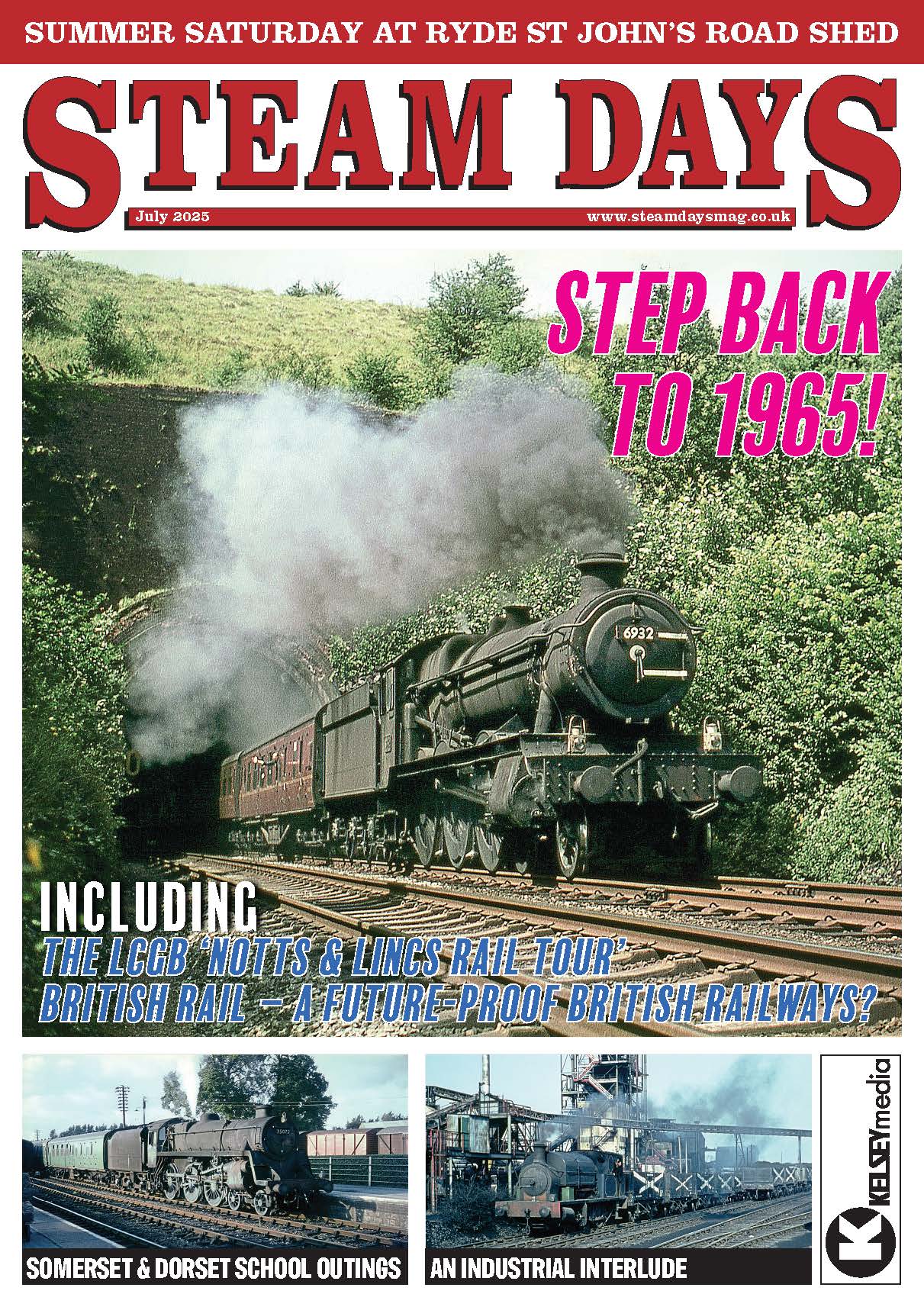In this article drawn from The Railway Magazine archive, K. S. Farr extols, at the time of its golden jubilee, the first of a great class.

TOWARDS the end of June 1927 there emerged from Swindon Works the first of thirty of the most powerful passenger locomotives engineered by the Great Western Railway. “Its” number was 6000; its name – despite rumours of a new “Cathedral” class—was King George V, after the monarch reigning at the time: a name destined to become famous wherever railways were spoken.
The raison d’être of the “Kings” was not simply that the GWR needed more powerful locomotives for its heavy and increasing West of England traffic, although this was a strong influencing factor. When Caerphilly Castle had posed punily beside Gresley’s Pacific Flying Scotsman at the 1924 Wembley Exhibition it had been acclaimed as Britain’s most powerful passenger locomotive purely on a tractive effort basis, although the claim was borne out by the 1925 Exchange Trials between GWR Pendermis Castle and LNER Victor Wild.
Thus had the modestly proportioned “Castle” lived up to its 31,625 lb. tractive effort; and the tractive effort war had begun. In 1926 Maunsell produced Lord Nelson from the Southern’s Eastleigh Works with a tractive effort of 33,500 lb. —although in this case such a “paper statistic” was not supported on the road, at least not until the locomotives had been modifiedby Bulleid. Meanwhile Gresley on the LNER was about to equip his Pacifics with long-travel valves and boiler pressure increased from 180 lb. per sq. in. to 220 1b., thereby raising their tractive efforts to 32,910 lb.
Enjoy more Steams Days Magazine reading every month.
Click here to subscribe & save.
The Great Western was determined not to be outdone in this rather meaningless contest. The General Manager, Sir Felix Pole, insisted on a locomotive with a tractive effort of at least 40,000lb. So, with boiler pressure increased to 250 1b., four cylinders enlarged to 1671- in. x 28 in., driving wheels reduced in diameter from 6 ft. 8% in. to 6 ft. 6 in. and a boiler tapering from 5 ft. 6% in. to 6 ft. 0 in., the “Super-Castles” were born in the shape of the “Kings.” And the resultant tractive effort was 40,285 lb., practically as high as that of any subsequent British steam locomotive.
Publicity accorded the birth of 6000 was unprecedented: as was the 67 ton 10 cwt. adhesion weight which restricted the locomotives initially to the Paddington—Bristol/Plymouth/Wolverhampton routes and which cost the Civil Engineer considerable sums in strengthening bridges. Yet within a month King George V had justified itself. On July 20, 1927, it hauled the 350-ton “Cornish Riviera Express” unassisted from Newton Abbot to Plymouth in just under 42 min. for the 31-9 miles of gruelling gradients and twisting curvature. Never before had such a load been taken over the South Devon banks by a single locomotive.
After its return from America, where it was exhibited at the Centenary.





